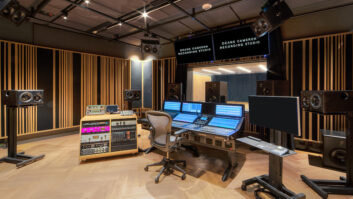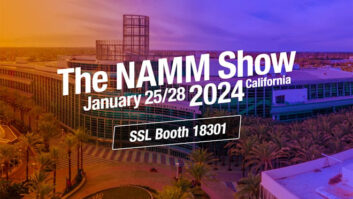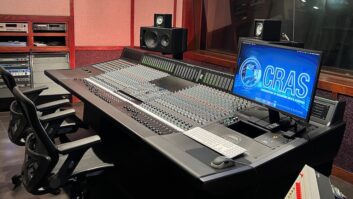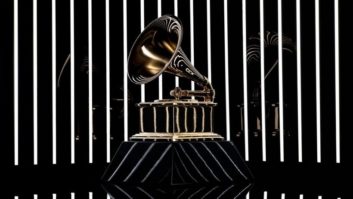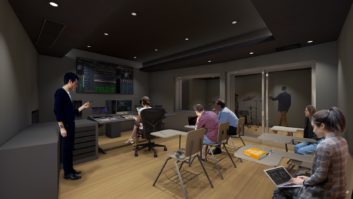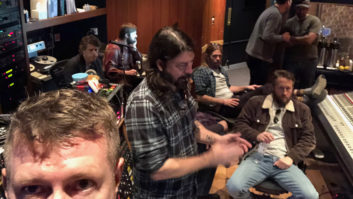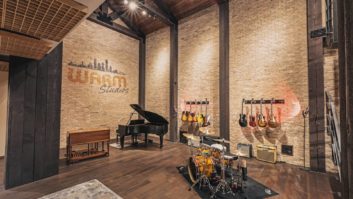This is an expanded version of the “State of Recording” cover story found in the October, 2012 issue of Pro Sound News.
Once upon a time, some saw the commercial recording studio as an endangered species. And, to date, that story has followed a Darwinian arc: The most adaptive businesses survived and – following an intense period of market consolidation – have now begun to thrive again.
The most restorative factor – the trend that has classic facilities humming and so many producer/engineers building out large-scale studios in cities all over the country – is this simple fact: By and large, producers and artists and engineers at almost every level want to work in a professional studio. They don’t need to; they want to.
This is why you see exceedingly well-equipped, well-staffed and well-maintained facilities like Blackbird Studios in Nashville, booking eight rooms at a time; And legacy facilities like Electric Lady Studios in New York, and The Village Recorder in Los Angeles expanding. San Francisco’s classic Coast Recorders, originally built by Bill Putnam in 1971, re-launched this month. And the legendary Sear Sound in New York is going strong.
So, what’s changed? Talk to the managers of any of these studios and you might think the very concept of the professional recording studio has been re-discovered.
“I think a lot of people are dying to get out of their houses,” offers Jeff Greenberg, CEO of The Village Recorder in Los Angeles. “They want to be around other creative humans, and other professionals.”
And, reportedly, they’re spending more time in these environments than in years past.
“Sessions are longer now,” confirms Roberta Findlay, manager of Sear Sound. “I was thrilled a year or two ago to get the two- or three-day bookings, but now – it’s come back from that. We’re getting two and three-week rock and jazz sessions. We just booked a big month-long session.
“In the old days, groups would come here to track and always go somewhere else to mix, but that’s not happening anymore. They’re doing the whole record here.”
Sear Sound, like all of the legacy studios, has been re-discovered in every new era – rock and avant icons like Thurston Moore and Yoko Ono, composers like Philip Glass, singer/songwriters like Rufus Wainwright, and new-wavers like Empire of the Sun are among the frequent clients. And that’s just this year.
And then there’s the jazz – more and more and more jazz. “There are just so many jazz sessions now,” says Findlay, “it’s become a business, really.”
And jazz sessions need large rooms and experienced engineers. “[Sear’s chief engineer] Chris Allen is a favorite among the jazz artists in NYC,” Findlay adds. “They also come for the space and the Steinways.”
It’s true: Studios are being booked for their gear and expert engineering again. Look at Blackbird in Nashville – which, with over 1,000 vintage mics, has one of the most amazing gear collections in the world.
“The gear is what gets the clients in the door,” assures Blackbird manager Scott Phillips. “And then our staff and the service we provide… that’s what brings them back. When you come here, it’s going to be done right. Clients see the difference that makes in their project.”
By appealing to some of today’s best and busiest engineer/producers – including Joe Chiccarelli, Jacquire King and Brendan O’Brien – Blackbird has also made fans of influential artists such as Jack White and Kings of Leon, not to mention country stars like Tim McGraw, Keith Urban and Taylor Swift. Blackbird’s access to top session players is also a huge asset.
“The solo artist who doesn’t have a band – like Dave Stewart or Joss Stone – can come here and use some of these players that are just amazing,” says Phillips. “And they’ll get their tracking done in half the time. Top players love tracking in these rooms because everything works, and there’s NO downtime. They can come in here and be creative and get stuff done.”
And for a Nashville studio, Blackbird does a lot of work with out-of-town acts. “We have bands coming in a couple weeks from Sweden, Australia, two bands coming in from Brazil,” says Phillips. “There are so many different facets and genres of the industry now that we don’t want to be considered a country-only, or rock-only studio.
“On any given day you could have Keith Urban in one room, Rascal Flatts in another room, then you might have Beck or Norah Jones, and Ke$ha…all in one complex, under one roof.”
Accommodating a diverse clientele – in terms of genre, production style and budget – has been a huge factor in the survival-of-the-fittest studio business. And, even at the highest level, things are only trending more diverse.
“Historically speaking, there were ‘boom moments’ during the first four decades at Electric Lady Studios that followed trends set by popular music,” says Lee Foster, manager of Electric Lady since 2005. “The profile of the studio was – depending on the era – largely skewed toward one genre. In the classic rock era, we recorded the Stones, Zeppelin, and Bowie, in the 80s – bands like AC/DC and KISS, and in the 90s we housed the entire Soulquarians movement.
“A studio like Electric Lady is aimed at the very top of ‘top-tier’ and – now – because ‘the laptop era’ endorses variety, no specific genre dominates studio, or popular culture. Walk through our facility lately and you’ll hear music as diverse as Adele, Kid Cudi, Grizzly Bear, and film scoring for Wes Anderson, or Scorsese as you travel. To be successful, the ability to cater to all genres is a requirement.”
Over the years, Foster has stayed ahead of the curve, not only by catering to resident mixers like Rich Costey, Michael Brauer – and now, Tom Elmhirst, but also by re-tooling and expanding the facility. Under new ownership, Electric Lady added an API tracking room this year – aimed at the indie market – and now offers a variety of vintage analog consoles to accommodate its diverse clientele. ELS has had a solid three year run of very long bookings with the likes of Kanye West, Coldplay, John Mayer and Patti Smith – and that trend, Foster says, shows no signs of slowing.
Across the country, The Village Recorder – already a multiplex catering to a high volume of commercial and resident clients – found the space and demand to build yet another studio. “We were moving a private tenant upstairs, and when we were renovating, we broke through the ceiling and discovered the original Masonic meeting room,” Greenberg says. “We looked up and saw these painted beams a whole story above the existing room. It’s almost as big as the auditorium!”
They renovated, and at T. Bone Burnett’s behest, built out a string room that ties into Studios A, B and F. “It took 8 months to restore, but we’re now up and running,” says Greenberg, “We just did our first string session for Colbie Caillat’s Christmas album.”
The Village hosts regular live recording sessions for indie and major record projects, and live tapings for KCRW. Its one-of-a-kind acoustic spaces and experienced staff are reportedly drawing in new clients all the time. “Our legacy is bringing a lot of people in,” adds Greenberg. “We’re seeing a lot of new, indie bands who are excited to record where Steely Dan and Bob Dylan have recorded.”
Efficiency is also a major draw. “If a band is well-rehearsed,” says Greenberg, “they can go to any major studio and make a record more cost-effectively than they can with the guy who spends half the day on the phone to tech support.”
And bands – 99-percent of which are on a budget – seem to understand this.
Philips sees that in a lot of the album projects at Blackbird: “These bands really have their stuff together. We have a band coming in, and they’re rehearsing all week right now getting things in order so when they come into the big room, they can get it done in six weeks.”
Producer/engineer Bryce Goggin (Pavement, Sebadoh), who operates Trout Recording in Brooklyn, sees the same trend. Over the last year, he says, “I see a much more sophisticated client arriving to work at my studio with the expectation of diving deep into my mic closet to capture their music. The studio is once more a place where performance and the focus on execution with precision is the driving itinerary.”
In a sense, because artists have to be more efficient, there’s a growing respect for the process, and an increasing interest in tracking live – which just plain requires a larger-format studio. In re-launching Coast Recorders with a newly re-built, Rupert Neve 5088-equipped control room, mastering engineer Michael Romanowski has also launched the “Live at Coast” series, where he produces live records with a studio audience.
“It’s a great vibe,” says Romanowski. “The artist is getting the energy back in the studio, like they would in a live set, but in the context of a recording.”
In San Francisco, Romanowski adds, there are so many different ‘scenes’ – all of which can benefit from a classic Bill Putnam tracking room like Coast, which is the longest continually running recording facility in town, has hosted Neil Young and REM, and was home to Concord Jazz and Mercury Records in the 70s. “We’re working on all kinds of music now – singer/songwriters like Jeff Campbell and Bonnie Hayes, Lia Rose – all tracking live in the studio. These are performances. And it’s been really interesting to see how big the Bluegrass and Americana scene is here.”
Naturally, more performance-oriented recording sessions – whether out of trend or necessity – bodes well for the studio business. And though at this point, some may see it as an “old-school” business, the traditional studio is being reintroduced to new generations of artists and engineers all the time, all over the country.
Producer/engineer Mike Naramore is in the design phase of a new large-scale facility in Muskegon Michigan for his business, Terrestrial Media. Out in a cornfield “in the middle of nowhere,” he’s going to convert an old church house and gymnasium into a world-class facility.
“We have a very eclectic music market around here – some fantastic folk acts, some great metal and hip-hop acts,” says Naramore, “And on this side of the state, there are no big rooms. We’re three hours from Detroit and three hours from Chicago.”
And unlike so many of the build-it-and-they-will-come studios of the 90s and 00s, Terrestrial’s new facility will be funded by Naramore’s booming… audio business.
“I found a niche in audio book recording, and it’s exploding,” he reveals. “Because real estate prices and the cost of living are so low here, I’ve been able to figure out how to use audio books to bankroll the whole new studio build, so we’ll be able to offer a world-class audio facility – with a large live room, analog console, tape machine and Pro Tools HDX – right here in Michigan.”

